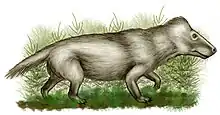| |||
|---|---|---|---|
|
Paleontology or palaeontology is the study of prehistoric life forms on Earth through the examination of plant and animal fossils.[1] This includes the study of body fossils, tracks (ichnites), burrows, cast-off parts, fossilised feces (coprolites), palynomorphs and chemical residues. Because humans have encountered fossils for millennia, paleontology has a long history both before and after becoming formalized as a science. This article records significant discoveries and events related to paleontology that occurred or were published in the year 1895.
Insects
| Name | Novelty | Status | Authors | Age | Type locality | Location | Notes | Images |
|---|---|---|---|---|---|---|---|---|
|
Cercopis grandescens[2] |
Sp nov |
Valid |
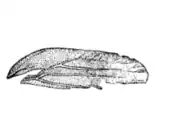 Cercopis grandescens (1895 illustration) | |||||
|
Cercopites torpescens[2] |
Sp nov |
Valid |
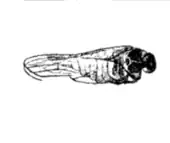 Cercopites torpescens (1895 illustration) | |||||
|
Dawsonites[2] |
Gen et sp nov |
Valid |
A froghopper |
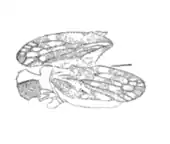 Dawsonites veter (1895 illustration) | ||||
|
Cryptocephalites[3] |
gen et sp nov |
Valid |
A chrysomelid leaf beetle. |
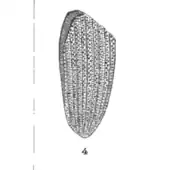 Cryptocephalites punctatus | ||||
|
Limonius impunctus[3] |
Sp nov |
Valid |
An elaterid click beetle. |
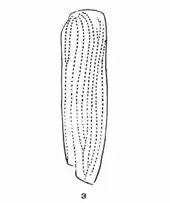 Limonius impunctus | ||||
|
Palaeoptysma[2] |
Gen et sp nov |
Valid |
A spittle bug |
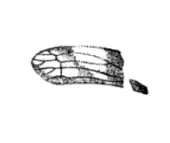 Palaeoptysma venosa (1895 illustration) | ||||
|
Ptysmaphora[2] |
Gen et sp nov |
Valid |
A spittle bug |
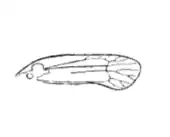 Ptysmaphora fletcheri (1895 illustration) | ||||
|
Ricania antiquata[2] |
Sp nov |
jr synonym |
A Polystoechotid-group moth lacewing[4] |
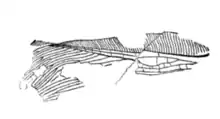 Ricaniella antiquata (1895 illustration) | ||||
|
Stenecphora[2] |
Gen et sp nov |
Valid |
A froghopper |
 Stenecphora punctulata (1895 illustration) | ||||
|
Stenolocris[2] |
Gen et sp nov |
Valid |
A froghopper |
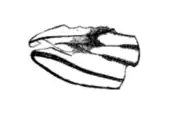 Stenolocris venosa (1895 illustration) | ||||
Synapsids
Non-mammalian
| Name | Status | Authors | Age | Location | Notes | Images |
|---|---|---|---|---|---|---|
|
Valid |
Seeley |
|||||
|
Valid |
Seeley |
| ||||
|
Valid |
Seeley |
A Cynodont. |
| |||
|
Valid |
Seeley |
|||||
|
Valid |
Seeley |
|||||
|
Valid |
Seeley |
|||||
|
Valid |
Seeley |
A Therocephalian |
||||
|
Valid |
Seeley |
|||||
Birds
| Name | Novelty | Status | Authors | Age | Location | Notes | Images |
|---|---|---|---|---|---|---|---|
|
Gen. et 2 sp. nov |
Valid |
Early–Middle Miocene (Santacrucian) |
A member of the Herpetotherinae. The type species is T. musculosus; Ameghino also named T. debilis, but it has since been synonymized with the former on the basis of sexual dimorphism.[6] |
||||
References
- ↑ Gini-Newman, Garfield; Graham, Elizabeth (2001). Echoes from the past: world history to the 16th century. Toronto: McGraw-Hill Ryerson Ltd. ISBN 9780070887398. OCLC 46769716.
- 1 2 3 4 5 6 7 8 Scudder, S. H (1895). "Canadian fossil insects, myriapods and arachnids, Vol I. The Tertiary Hemiptera of British Columbia". Geological Survey of Canada Contributions to Canadian Palaeontology. 2: 5–26.
- 1 2 Scudder, S. H (1895). "Canadian fossil insects, myriapods and arachnids, Vol II. The Coleoptera hitherto found fossil in Canada". Geological Survey of Canada Contributions to Canadian Palaeontology. 2: 5–26.
- ↑ Shcherbakov, D. E. (2006). "The earliest find of Tropiduchidae (Homoptera: Auchenorrhyncha), representing a new tribe, from the Eocene of Green River, USA, with notes on the fossil record of higher Fulgoroidea". Russian Entomological Journal. 15: 315–322.
- ↑ Meunier, F. (1897). "Observations sur quelques insectes du Corallien de la Bavière". Rivista Italiana di Paleontologia. 3: 18–23.
- ↑ Jorge I. Noriega; Juan I. Areta; Sergio F. Vizcaíno; M. Susana Bargo (2011). "Phylogeny and Taxonomy of the Patagonian Miocene Falcon Thegornis musculosus Ameghino, 1895 (Aves: Falconidae)". Journal of Paleontology. 85 (6): 1089–1104. doi:10.1666/10-122.1. hdl:11336/76576. S2CID 84262902.

